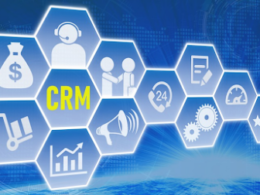Traditional market research is dead. Whether it’s customer surveys, focus groups, or interviews, brands looking to truly understand their consumers need to leave these dated methods in the past. Unsurprisingly, the answer to obtaining consumer insights in an age in which tech has truly taken over is data-powered.
In order to achieve marketing success, your brand needs detailed insights on the psychographic nature of your audiences. Much more than just demographic features, CB Insights states that psychographics “is the study of consumers based on their activities, interests and opinions.”
These can be learned by monitoring the online behavior of your target consumer groups and delving deep into the spaces in which they’re browsing and engaging. Website analytics, browsing data and social media monitoring will all shed light on these types of consumer characteristics.
Once you gain access to these crucial insights, you can make informed decisions about how to connect with your audience. This means deciding which spaces to enter to find your brand’s target consumers, rather than taking the approach of trying to attract them to where you’re currently operating.
Let’s take a look at the lifestyle data that makes up the psychographic profile of a target consumer group, and some examples that demonstrate how you can leverage these insights.
What are their interests?
Understanding the interests of your target audience can help you in many ways: it can help you identify topics for website content, tailor social media campaigns, and even with physical aspects of branding, such as location and design of brick-and-mortar stores.
For example, a consumer electronics company noticed on social media that their target group was heavily interested in astrology, so they positioned their physical stores and brand locations close to fortune telling spots, hoping to capitalize on the psychic-enthusiasts that might coincidentally pass by.
Another example comes from a global sports brand that experienced a surge in sales after using an AI-powered consumer analytics platform to understand which of its Istanbul stores it should remodel in order to appeal to soccer-lovers. The platform delved deep into what really defines a soccer lover in terms of their profiles on social media.
By researching a base of 50,000 known soccer-lovers, the tool uncovered where they spend their free time, where they shop, and their general interests. The research revealed that the best site to remodel was in fact not the most central store, but rather one in an area on the outskirts of the city. The sports brand remodeled this store with a complete soccer theme — and experienced a 210 percent increase in sales in that store as a result.
Related: What Goes In to Market Research and How Much Does it Cost?
What other brands are they engaging with?
It’s not uncommon for brands to find that their target audience just isn’t that into them. You might have a lot of followers on social media, but how many of them are actually engaging with your content? If your business is struggling with this, you can look at which brands your audience is interested in and engaging with to understand what might work for you.
You might discover that your target audience is loving other brands’ interactive Instagram stories, or is responding to their purposefully crafted Twitter hashtag campaign. Use these insights to power your own online presence and get your audience engaging with you, too.
These insights can also work in a more physical sense. For example, one of the biggest gasoline companies in Europe found that their target audience was engaging with healthy beverage brands rather than sugary ones by conducting an analysis of their social media engagement among brands.
They changed their positioning of the healthy beverages in their gas stations by bringing them to the front of the store, and subsequently increased sales by 22 percent.
Who are their favorite celebrities?
Tracking which celebrities your target consumers are engaging with can also bring you many valuable insights as to the kind of content you should push out, as well as knowledge on who might be the best fit for potential partnerships and marketing campaigns.
Say your target consumers are into tech figureheads like Bill Gates: They would probably be interested in more serious, business-focused content that provides them with valuable takeaways, whereas an audience that’s engaging with pop music artists might prefer a more lighthearted and informal message.
A great example of this in action comes from a personal cloud device that automatically backs up and organizes your photos straight from your phone or camera. When conducting research into which celebrities their audience is into, the company found that a sizeable chunk of the device’s users were teenage K-Pop fans who were regular attendees of BTS concerts. These teens needed the device to back up their photos and videos, as they take so many at the concerts that their phones’ memory was regularly filling up. Armed with these insights, the device was able to launch a new ad campaign targeting BTS fans specifically.
… And their top influencers?
As with celebrities, tracking which influencers your target audience is engaging with can help power some seriously impactful marketing campaigns.
Influencer marketing is only going to grow: it’s set to become a $10 billion industry by 2020, so knowing who your audience is being influenced by is crucial.
You can gain an in-depth understanding of not only who they are engaging with, but also the reasons behind that engagement through an analysis of what kind of influencer content resonates with different audiences, and what potential opportunities for collaboration exist.
It’s crucial for brands to understand the importance of influencers that their audience engage with — and that these might not be the influencers that they expect. An AI-driven audience analysis can reveal key insights and help you strategize accordingly.
Sign Up: Receive the StartupNation newsletter!
What social causes are on their radar?
Consumers are increasingly making conscious decisions, and brands are following suit.
Not surprisingly, a study found that 87 percent of consumers would buy a product based on a company’s advocacy on an issue they care about, and 70 percent of people in the U.S. believe that companies have an obligation to help social causes.
So, aligning your brand with a social or environmental cause is a no brainer in the era of the “conscious consumer.”
Yet, brands not only need to make sure that they are being authentic with this commitment and that it aligns with their values and mission, but also that it’s a cause their consumers are enthusiastic about, too. This means that brands shouldn’t just go for a cause based on the pitches they receive and the information that’s right in front of them. Instead, they should conduct an analysis of their audience’s social and environmental interests in order to choose a cause that will grab their attention.
For example, just because users of video-streaming services are obsessing over cute kitten videos doesn’t mean that they’re equally supporting animal rights charities. In fact, video streaming website Hulu’s audience is actually much more interested in supporting health-related causes.
With all this in mind, it’s clear that brands have a lot more to uncover about their consumers than they realized. Too many marketers are making assumptions about their audience that may result in wasted campaigns, content, and ultimately, money.
Powering your marketing campaigns with accurate data insights on the psychographic nature of your target audience can help you access the spaces that they really care about — and get them caring just as much about you and your business, too.






